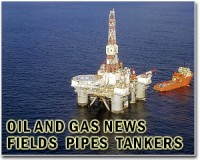 |
Washington DC (SPX) Nov 18, 2010 The numerous technical and operational breakdowns that contributed to the Deepwater Horizon oil rig explosion and spill from the Macondo well in the Gulf of Mexico suggest the lack of a suitable approach for managing the inherent risks, uncertainties, and dangers associated with deepwater drilling operations and a failure to learn from previous "near misses," says an interim report of preliminary findings from a committee of the National Academy of Engineering and National Research Council. The events also suggest insufficient checks and balances for critical decisions impacting the schedule for "abandoning" the exploratory well - or sealing it in transition to production - and for considering well safety. "Important decisions made to proceed toward well abandonment despite several indications of potential hazard suggest an insufficient consideration of risks," said Donald Winter, former secretary of the Navy, professor of engineering practice at the University of Michigan, and chair of the study committee. "It's also important to note that these flawed decisions were not identified or corrected by BP and its service contractors, or by the oversight process employed by the U.S. Minerals Management Service and other regulatory agencies." It may not be possible to definitively establish which mechanisms caused the blowout and explosion, given the deaths of 11 witnesses on board, the loss of the oil rig and important records, and the difficulty in obtaining reliable forensics information from the Macondo well, the report says. Nevertheless, the committee believes it has been able to develop a good understanding of a number of key factors and decisions that may have contributed to the blowout of the well. The report cites numerous decisions that apparently contributed to the accident, beginning with continuing abandonment operations at the Macondo site despite several tests that indicated that the cement put in place after the installation of a long-string production casing was not an effective barrier to prevent gases from entering the well. The decision to accept the test results as satisfactory without review by adequately trained shore-based engineering or management personnel suggests a lack of discipline and clearly defined responsibilities. In addition, several clear failures in monitoring of the well appear to have contributed to its blowout; available data show hydrocarbons entered the well undetected for almost an hour before the first explosion. Timely and aggressive action to control the well was not taken, and for unknown reasons, hydrocarbons were funneled through equipment that vented them directly above the rig floor rather than overboard. These conditions made ignition "most likely," the report says. Finally, the blowout preventer did not seal the well once activated. Of particular concern is the lack of a systems approach to integrate the multiple factors impacting well safety, to monitor the overall margins of safety, and to assess various decisions from a well integrity and safety perspective. The report also notes that a previous loss of hydrocarbon circulation in the Macondo well more than a month before the accident presented an opportunity to take actions to mitigate future risks. Several questionable decisions also were made about the cementing process prior to the accident, including + attempting to cement across multiple hydrocarbon and brine zones in the deepest part of the well in a single operational step, making a hydraulic fracture in a low-pressure zone more likely; + using a long-string production casing instead of a liner over the uncased section of the well; + and deciding that only six centralizers were needed to ensure an even spacing between the formation rock and the casing, even though modeling results suggested that more centralizers would have been necessary. The type and volume of cement used to prepare for well abandonment and the time provided for the cement to cure may also have impacted the well's integrity. For its final report, due in the summer of 2011, the committee will examine ways to establish practices and standards to foster a culture of safety and methods to ensure that schedule and cost decisions do not compromise safety. The committee will assess the extent to which there are gaps, redundancies, and uncertainties in responsibilities of multiple agencies and professional societies overseeing deepwater drilling operations, and it will consider the merits of an independent technical review to provide operation checks and balances by enforcing standards and reviewing deviations. The Macondo well's blowout preventer was only recently recovered and is undergoing forensic analyses. The committee will evaluate possible causes for the failure of the blowout preventer once key data are made available. Data on maintenance, testing, operating procedures, and reliability of alarms and other safety systems on the Deepwater Horizon rig will also be examined; testimony at other hearings indicate that various alarms and safety systems failed to operate as intended.
Share This Article With Planet Earth
Related Links National Academy of Sciences Powering The World in the 21st Century at Energy-Daily.com
 Nigeria's oil war heats up as polls loom
Nigeria's oil war heats up as polls loomPort Harcourt, Nigeria (UPI) Nov 17, 2010 Nigeria's oil insurgency has escalated with an attack on an offshore platform run by Exxon Mobil in which eight employees were kidnapped and with the emergence of a new militant organization in the oil-rich south. The surge in violence was heightened by a raid on an insurgent camp in the troubled Niger Delta region by government troops in what could be a precursor of a larger military o ... read more |
|
| The content herein, unless otherwise known to be public domain, are Copyright 1995-2010 - SpaceDaily. AFP and UPI Wire Stories are copyright Agence France-Presse and United Press International. ESA Portal Reports are copyright European Space Agency. All NASA sourced material is public domain. Additional copyrights may apply in whole or part to other bona fide parties. Advertising does not imply endorsement,agreement or approval of any opinions, statements or information provided by SpaceDaily on any Web page published or hosted by SpaceDaily. Privacy Statement |